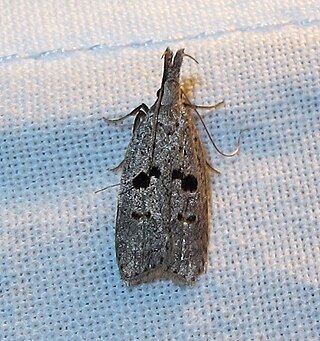
Carl Ferdinand Cori, ForMemRS was a Czech-American biochemist and pharmacologist. He, together with his wife Gerty Cori and Argentine physiologist Bernardo Houssay, received a Nobel Prize in 1947 for their discovery of how the glucose derivative glycogen is broken down and resynthesized in the body for use as a store and source of energy. In 2004, both Coris were designated a National Historic Chemical Landmark in recognition of their work that elucidated carbohydrate metabolism.

Mississippi College (MC) is a private Baptist university in Clinton, Mississippi. Founded in 1826, MC is the second-oldest Baptist-affiliated college or university in the United States and the oldest college or university in Mississippi.

Clarke University is a private Catholic university in Dubuque, Iowa. It was founded in 1843 as St. Mary's Female Academy by Mother Mary Frances Clarke, foundress of the Sisters of Charity of the Blessed Virgin Mary.

César Pelli was an Argentine-American architect who designed some of the world's tallest buildings and other major urban landmarks. Two of his most notable buildings are the Petronas Towers in Kuala Lumpur and the World Financial Center in New York City. The American Institute of Architects named him one of the ten most influential living American architects in 1991 and awarded him the AIA Gold Medal in 1995. In 2008, the Council on Tall Buildings and Urban Habitat presented him with The Lynn S. Beedle Lifetime Achievement Award.
Ceranemota albertae, the Alberta lutestring, is a species of moth of the family Drepanidae first described by John Frederick Gates Clarke in 1938. It is found in western Canada, from south-central British Columbia east to south-eastern Saskatchewan. The habitat consists of dry open woodlands and shrub areas with wild cherry.

David Jeffery Wineland(born February 24, 1944) is an American Nobel-laureate physicist at the National Institute of Standards and Technology (NIST). His work has included advances in optics, specifically laser-cooling trapped ions and using ions for quantum-computing operations. He was awarded the 2012 Nobel Prize in Physics, jointly with Serge Haroche, for "ground-breaking experimental methods that enable measuring and manipulation of individual quantum systems".

Henry Louis Gates Jr. is an American literary critic, professor, historian, and filmmaker who serves as the Alphonse Fletcher University Professor and the director of the Hutchins Center for African and African American Research at Harvard University. He is a trustee of the Gilder Lehrman Institute of American History. He rediscovered the earliest known African-American novels and has published extensively on the recognition of African-American literature as part of the Western canon.
Depressaria betina is a moth in the family Depressariidae. It was described by John Frederick Gates Clarke in 1947. It is found in North America, where it has been recorded from California to Washington.
Depressaria angustati is a moth in the family Depressariidae. It was described by John Frederick Gates Clarke in 1941. It is found in North America, where it has been recorded from Washington.
Depressaria palousella is a moth in the family Depressariidae. It was described by John Frederick Gates Clarke in 1941. It is found in North America, where it has been recorded from Washington.
Depressaria whitmani is a moth in the family Depressariidae. It was described by John Frederick Gates Clarke in 1941. It is found in North America, where it has been recorded from California, Arizona, Washington, Colorado and Montana.
Depressaria yakimae is a moth in the family Depressariidae. It was described by John Frederick Gates Clarke in 1941. It is found in North America, where it has been recorded from Washington.
Depressaria leptotaeniae is a moth in the family Depressariidae. It was described by John Frederick Gates Clarke in 1933. It is found in North America, where it has been recorded from Oregon, Alberta, Idaho and Washington.
Depressaria multifidae is a moth in the family Depressariidae. It was described by John Frederick Gates Clarke in 1933. It is found in North America, where it has been recorded from Oregon, Washington, Idaho and California.

Dichomeris glenni is a moth in the family Gelechiidae. It was described by John Frederick Gates Clarke in 1947. It is found in North America, where it has been recorded from Florida, Illinois, Indiana, Kansas, Louisiana, Mississippi, Oklahoma, Ontario, Texas and Wisconsin.

Gelechiinae is a subfamily of moths in the family Gelechiidae. It was described by Henry Tibbats Stainton in 1854.
Filatima nucifer is a moth of the family Gelechiidae. It is found in Mexico (Sonora) and the United States, where it has been recorded from Montana.
Scrobipalpopsis arnicella is a moth in the family Gelechiidae. It was described by John Frederick Gates Clarke in 1942. It is found in western North America, where it has been recorded from Washington and California.
Scrobipalpula lutescella is a moth in the family Gelechiidae. It was described by John Frederick Gates Clarke in 1934. It is found in North America, where it has been recorded from California, Washington, Alberta and Yukon.
Satish Ramnath Shetye is an Indian geophysicist, oceanographer and a former vice chancellor of the University of Goa. He is a former director of the National Institute of Oceanography (NIO) and is known for his researches on the monsoon-driven currents along the Indian coast. He is an elected fellow of all the three major Indian science academies viz. Indian National Science Academy, Indian Academy of Sciences, National Academy of Sciences, India as well as the Indian Geophysical Union. The Council of Scientific and Industrial Research, the apex agency of the Government of India for scientific research, awarded him the Shanti Swarup Bhatnagar Prize for Science and Technology, one of the highest Indian science awards for his contributions to Earth, Atmosphere, Ocean and Planetary Sciences in 1992.







